This post is out of date. There is a newer, better version of Class Warfare Chess described in this post
The narrative embedded in the classic chess board is obvious. Two rows of unskilled and expendable pawns face off to protect the interests of the more talented nobility. All sacrificing everything to protect a bumbling ineffectual king.
Well not anymore. It’s time to flip the tables.
I wrote new rules for chess that pits the pawns against the nobles. But in this game, the nobles only maintain their special moves if they can keep the pawns in their place. You can play the game online with a friend here. Read on to learn more about the rules.
The Rules of the Game
Here are the rules we’ve come up with for the first edition.
- The game is played on only one half of the board (8x4), with one row of proletariat pieces (pawns) on one side and the opposite color’s bourgeoisie pieces (non-pawns) on the other side.
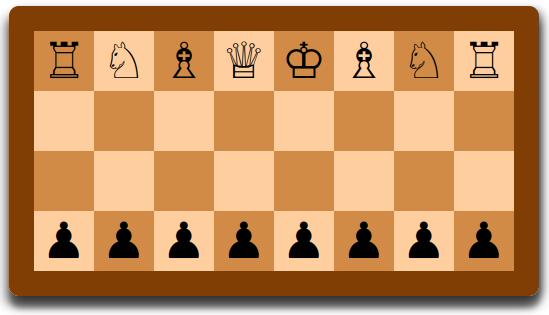
-
Proletariat pieces (pawns) move like regular pawns.
-
For bourgeoisie pieces (non-pawns), we refer to the squares opposite to their type’s starting position as that type’s “factory squares.” As an example, here are the factory squares for the rooks.
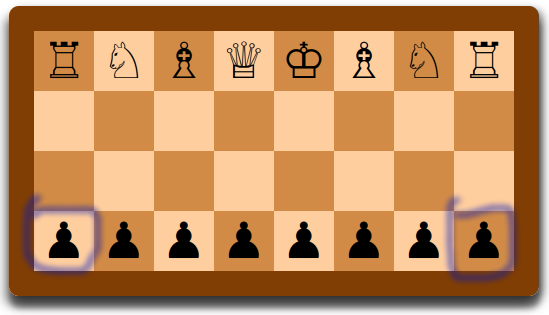
- When both of the factory squares for a given type are occupied, then those bourgeoisie pieces move as in normal chess. However, if either factory square is empty, then the corresponding type moves just like a regular pawn. For example, both rooks can move like rooks only if the squares opposite to both rooks (the rooks’ factories) are occupied.
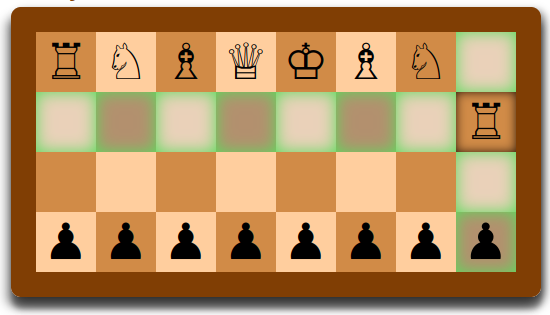
- However, if either of those two positions are not occupied, then the rook operates like pawn. Here, the far away pawn moved out of the factory so now the rook can only move forward one space.
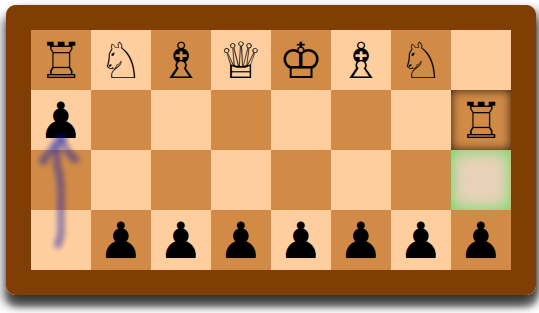
- The queen’s factory squares are the ones across from her and the king. The king has no factory and always moves like the king.
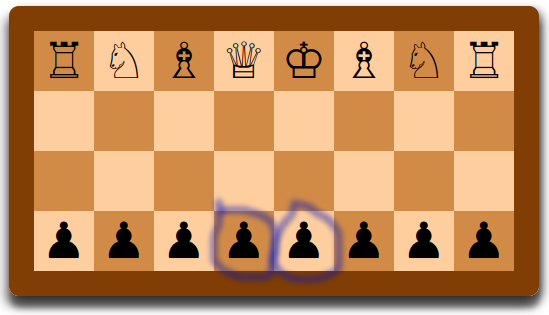
- If a proletariat piece is captured in a column with an unoccupied factory square, then the proletariat will not be removed from the board. Instead it will just be returned to the factory square.
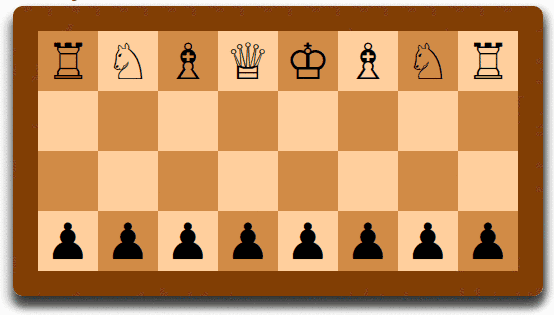
- However, if the column’s factory square is already occupied, then the proletariat is removed from play when captured.
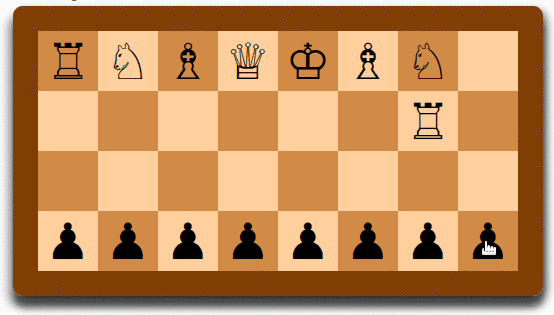
- Finally, if a proletariat piece reaches the farthest row then it can move side-to-side along the back one square at a time for both capturing or moving. However, it cannot move off the back row.
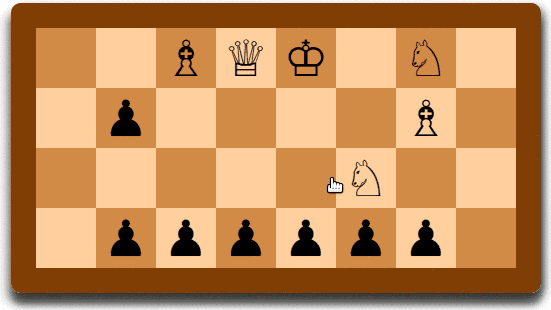
Those are all the basic rules of gameplay in this version. If you just want to play the game you can play Class Warfare Chess. Read on to learn more about the meaning behind the game.
The Philosophy of Class Warfare Chess
We developed this game to teach two specific lessons about class consciousness.
The first lesson is that the special abilities that we seem to ascribe to our rulers are only possible because of the work that we do for them. Successful business persons and politicians are often only successful because they have a team of people who are having their efforts extracted from them for less than they are worth. That’s why in the game, the moment the worker walks away from their “factory squares,” the owners’ special power disintegrates and they become just a regular pawn. In that sense, the major challenge of this game and of our collective struggle is to coordinate our resistance to overcome the owner’s systems of oppression.
The second lesson that I wanted to show was the focus on artificial political ties in standard chess. In regular chess, pawns fight for the king of the same color, which is the same way our real-life social and political tribalism works. These distinctions mask the great similarity between working people around the world. A working class person in the US is way more similar to a working class person in China than either are to the people who rule over them, but political divisions are drawn so that we don’t see our universal humanity. Similarly the divisions between working class Republican and Democratic also mask our shared struggle to overcome our exploitation.
This lesson becomes even more clear in the advanced version of the game. In the advanced version, you actually play with the whole board, but the black and white pieces don’t fight anymore: it’s all the pawns vs all the masters.
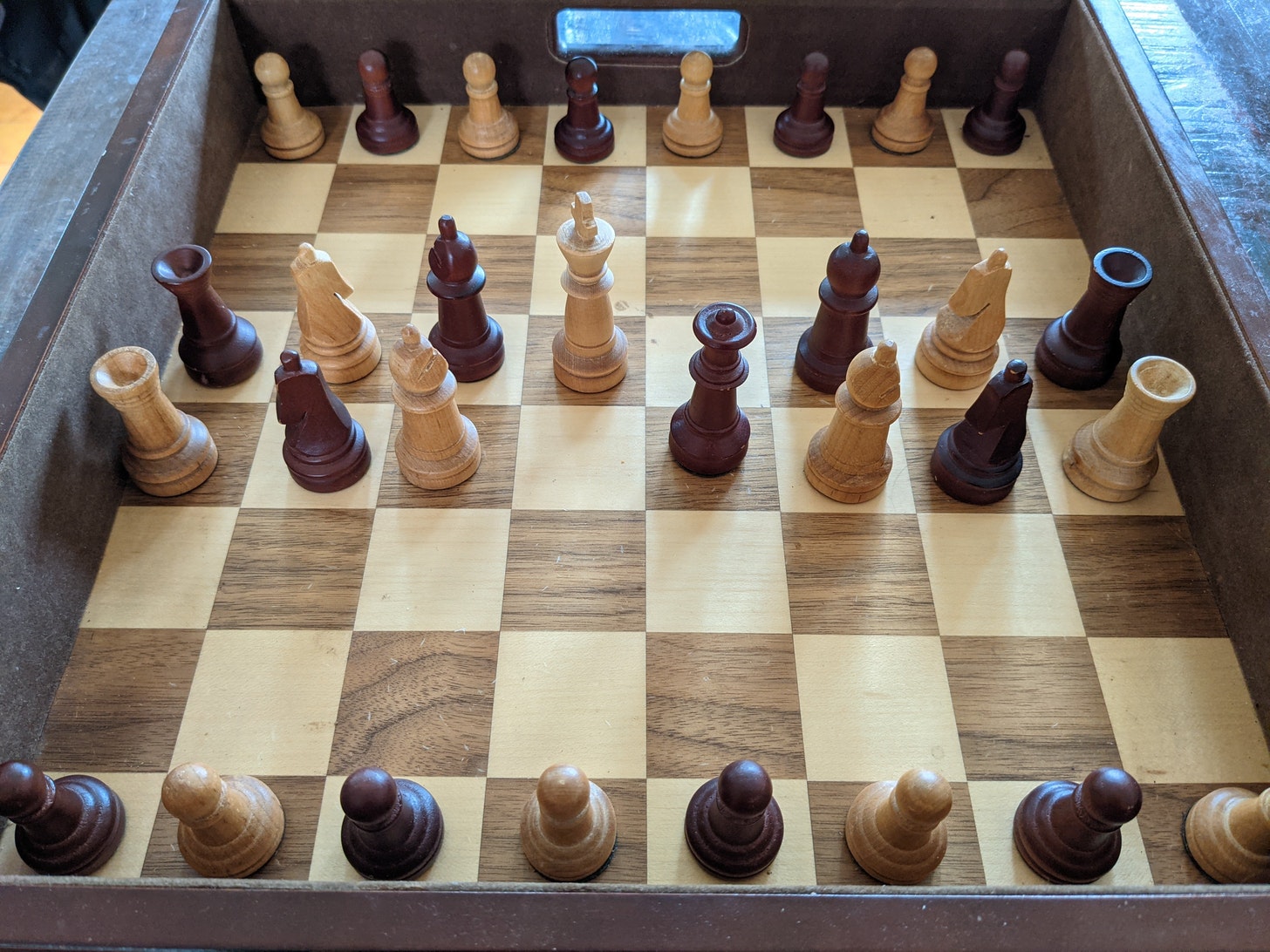
I haven’t yet built an online version with that format, but if you have your own chessboard, you can play it using the same rules defined above. The only modification is that any of the bourgeoisie pieces can move to either side while the proletariat can’t pass the central line. The implication in this version is that the proletariat from all corners of the world need to come together to bring down the ruling class.
Onward Comrades!
We just invented this game and, as such, we don’t fully understand all its nuances. We expect over time we’ll modify the rules to optimize play. Make sure to let us know how it goes for you.
 will stedden
will stedden